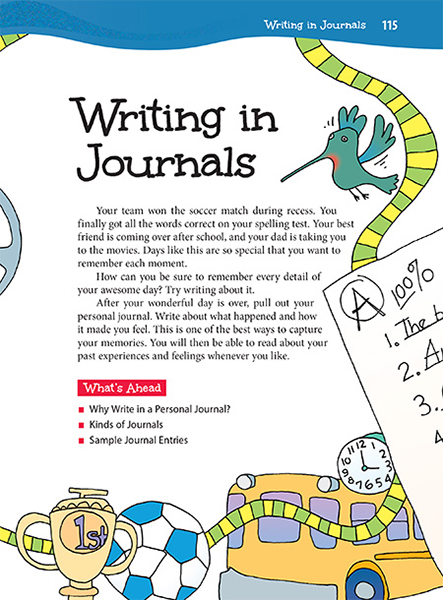Page 115 from

Start-Up Activity
Start class with this writing prompt:
If you could live anywhere in the world, where would it be and why?
Have your students write about the prompt for five minutes. Write your own response during that time. Ask for volunteers to share their writing with the class, and share your own if you wish.
Let your students know that they have each just written a journal entry. In this chapter of their handbooks, they can find out all about journal writing.
Think About It
“A journal is a chance for students to think for themselves.”
—Dan Kirby

Start-Up Activity
Start class with this writing prompt:
If you could live anywhere in the world, where would it be and why?
Have your students write about the prompt for five minutes. Write your own response during that time. Ask for volunteers to share their writing with the class, and share your own if you wish.
Let your students know that they have each just written a journal entry. In this chapter of their handbooks, they can find out all about journal writing.
Think About It
“A journal is a chance for students to think for themselves.”
—Dan Kirby